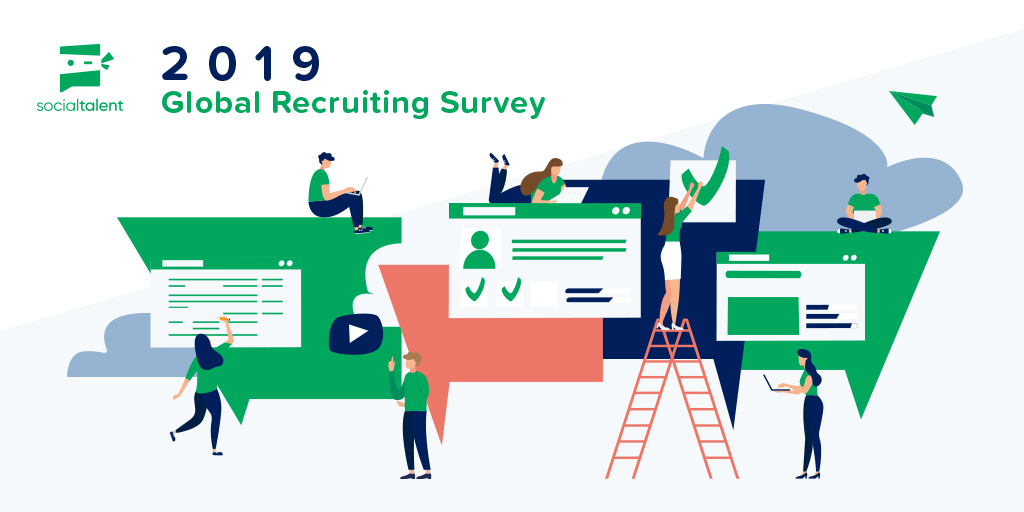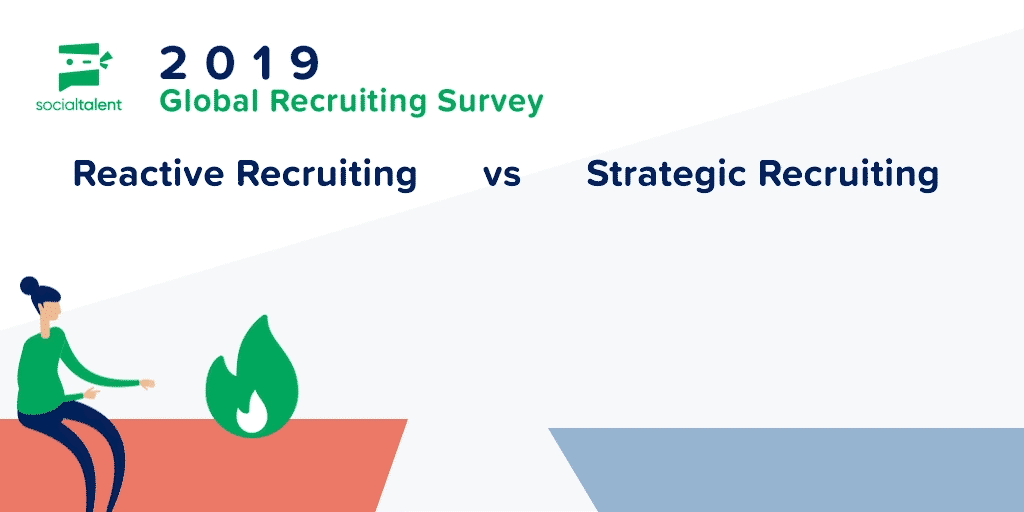Reactive to Super Strategic Recruiter in 3 Simple Steps

After over 1,600 responses from hiring professionals based in 92 countries, the results of our Global Recruiting Survey for 2019 are in, and the results reveal quite a lot that we expected about today’s hiring landscape, but also quite a bit that we hadn’t expected.
The main theme that ran through the results was that there are two distinct types of professionals operating in the hiring world today. It might be easy to assume that we are talking about Agency versus In-house, but no, the predominant dividing line in the hiring profession separates those that operate reactively and those that operate strategically.
Evidence of this division is easily seen in the attitudes that recruiters have about talent pipelining. And surprisingly, we found agency recruiters have the more strategic mindset in this regard, with in-house recruiters not placing nearly as much value on building and nurturing the talent verticals from which they can pluck candidates months down the line.
A possible explanation for this is that agency recruiters see their talent verticals as money, as a genuine asset worthy of the time spent building and nurturing them. Which is true, but it’s also too simple an explanation. Because a well built and well-nurtured pipeline is just as valuable to an in-house recruiter as to their agency counterpart. For example, a quality pipeline can mitigate against the potential damage caused by the typical “worst-case-scenarios” that an in-house recruiter might find themselves in, like missing an SLA due to a sudden loss of staff, or an inability to scale quickly enough to meet the demand of a business win.
We’re going to take a deep-dive into what’s required to start winning the pipelining game.
But to start, what are the main considerations you need to make before you start to build?

1. Think Long Term
The wrong way to build a great talent pipeline is to target the candidates you need right now. Pipelines can take some time to pay off and so they’re not likely to be the solution to your immediate hiring needs. And because they take time to pay off, you need to build them with your future hiring needs in mind. Find out what positions you’ll need to hire for in 3 months, 6 months, or even a year’s time and build talent verticals based around those hiring needs.
2. Pipeline Screening
With an open req – the phone screen is the best way to find out for sure which applicants are likely fits and which applicants just seemed likely. And in reality, some candidates can seem like the perfect fit until you spend a few minutes on the phone with them and realise that they don’t come anywhere near to matching the promise of their C.V.’s. So why don’t we put this effort in at an earlier stage?
By phone screening candidates before we add them to our pipeline, we may end up with less quantity than if we added candidates indiscriminately. But we end up with pipelines of quality candidates that we’d be happy to send for interview and that are open to the opportunity of working with our company. This level of work earlier on in the process means that once your hiring needs become real, you’ve got a pipeline of candidates who are ready, willing and able to to work at your company.
3. Get Hiring Manager Buy-In
Having your hiring manager onside underpins that value that can be gained from long term thinking and pipeline screening. If you fly solo and neglect to include the hiring managers relevant to the talent verticals that you’re building, then you’re bound to become misaligned and the candidates you’ve pipelined won’t be what they’re looking for, and you’ll find yourself under time-pressure to make hires.
So when you identify the roles you’ll need to hire for in six months, or a years time, one of the most important things you need do is set out job profiles for these roles with the relevant hiring managers. These job profiles will identify the needs, wants and hiring criteria for those roles, so as you build your pipeline, each of the candidates within it will perfectly match the job spec.
We also found from the results of our global recruiting survey for 2019 that one of the biggest difficulties in the hiring process is unclear definitions between the hiring manager and recruiters around “what does good look like?”. So much so that the average number of candidates submitted on shortlists to hiring managers was 17. The reason for this is an “I’ll know it when I see it” attitude from hiring managers. Vague instructions like this lead recruiters to cast a wide and undefined net into the talent market finding a high quantity of low-quality candidates, rather than laser-focused shortlists of star candidates. This leads to an inefficient process and wasted time. Getting hiring manager buy-in on your pipeline building strategy is a great way to eradicate these inefficiencies.
A great way to ensure that your hiring managers are advocates of this process is to present them with evidence of the positive impact that that pipelining can have on their SLA’s. For example – “This will lead to a reduction in time to hire of 6 weeks, resulting in achievement of productivity of 12 weeks, instead of 18 weeks”. Or “This will lead to more candidates with knowledge of Salesforce being available to us, which will result in achievement of sales targets of 2 months, instead of 4 months”.
These steps will not happen overnight but they are the best place to start when it comes to moving from being reactive to a strategic recruiter.
The SocialTalent Global Recruitment Survey is free to download and is packed with essential information to guide you through a successful career in recruitment
